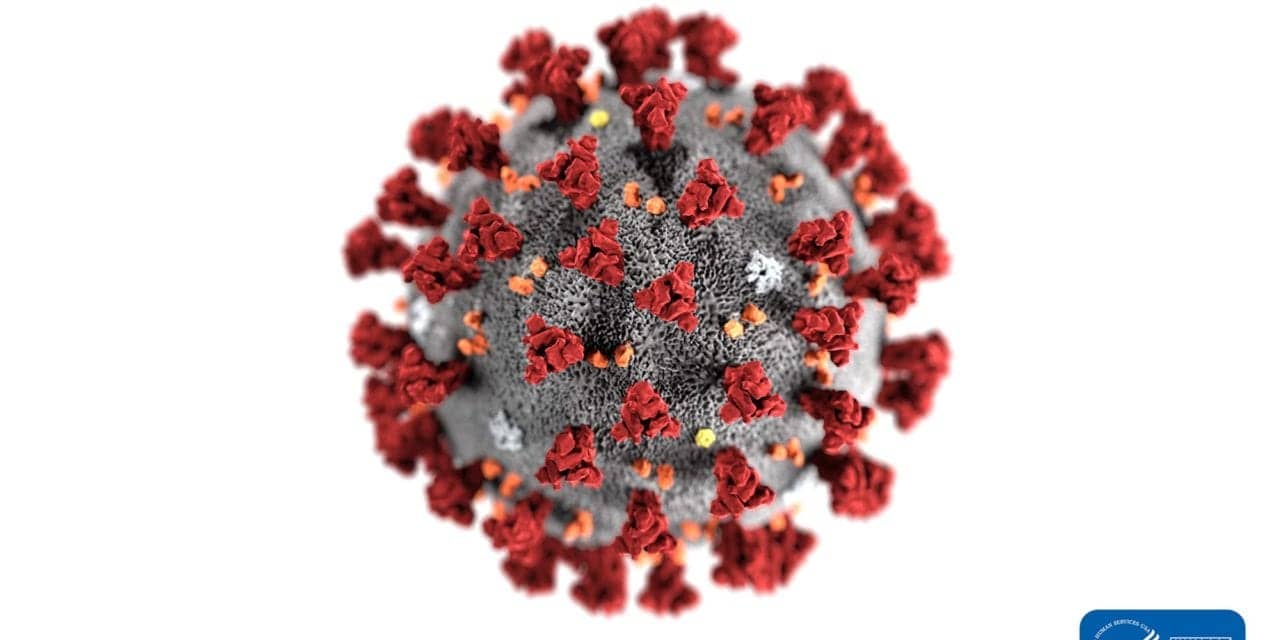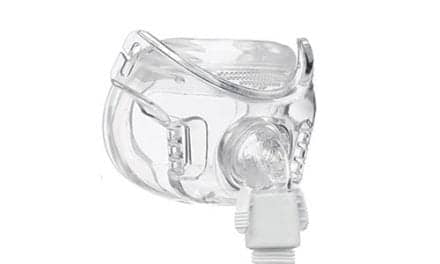In the early days of the pandemic, many hospitals and medical institutions advocated for early intubation and mechanical ventilation, but now emerging research shows that high-flow oxygen therapy could be enough support for many COVID-19 patients through to recovery.
By Lisa Spear
A tsunami of omicron cases hit during the holidays and hospitals throughout the nation are yet again under siege by COVID-19. Marred by staffing shortages, and dwindling hospital beds, there appears to be no reprieve in sight for critical care medical workers. Still, despite all this grim news, there is a silver lining. Population immunity, new therapeutics, and an overall increased understanding among medical personnel on how to best care for these patients, are all driving down the need for the most invasive forms of life support, including mechanical ventilation.
One of the many tools used, and perhaps an unsung hero in the fight against the novel coronavirus, is high-flow oxygen. This therapy, distinct from conventional oxygen therapy in several ways, delivers a mixture of oxygen and air into the nose by way of a cannula.
As the oxygen reaches the airways, the high-flow introduces positive pressure that can help stent the alveoli open. The gas, heated and humidified, can moisten the lungs to help mobilize secretions. The concentration of oxygen in high-flow therapy can be set to up to 100%, much higher than the 30 to 40% typically seen in conventional oxygen therapy.
“It really has become the modality of treatment to support COVID-19 patients who aren’t undergoing mechanical ventilation,” says Abhimanyu Chandel, MD, who was only beginning his pulmonary and critical care fellowship at Walter Reed National Military Medical Center in Bethesda, Maryland, when the pandemic took hold.
Prior to COVID-19, it was relatively rare for high-flow to be administered outside the intensive care unit (ICU). Now, he says, it is often administered outside the ICU, allowing clinicians to conserve intensive care resources, while still providing a life-saving therapy to those who need it.
Also, high-flow nasal cannula therapy is more comfortable and therefore easier to tolerate for patients than many other forms of ventilation. Not requiring a face mask, patients are still able to eat, talk, and cough while receiving therapy. They are also more easily able to stay in a prone position for hours at a time, lying flat on their stomachs, to increase oxygenation.
Patients can be left on high-flow for days, and gradually move down to conventional oxygen, before weaning off therapy all together. The more Chandel and his team have witnessed this progression, he says, the more they began to think that maybe keeping patients off mechanical ventilation could help these patients in the long run.
High-flow oxygen is nothing new in critical care medicine, but when the SARS-COV-2 virus surfaced in the United States in 2020, there was a lot of confusion about when exactly it and other therapies should be used, and for how long.
“There were a number of experts that in the early part of the pandemic had advocated that it was not even worthwhile to have patients on high-flow nasal cannula or non-invasive ventilation for a really prolonged period of time because these patients are pretty much doomed to require invasive mechanical ventilation down the road,” says Chandel, now a third year pulmonary and critical care fellow.
A report from physicians and scientists in China and the United States, released in March of 2020, expressed concern that intubation wasn’t coming quick enough for some of the most sick patients. “The frontline physicians taking care of critically ill patients in Wuhan suggest that intubation and invasive ventilation may have been adversely delayed in some patients,” wrote author Lingzhong Meng, MD, professor of anesthesiology at Yale University School of Medicine, and his collaborators.1
“They are concerned that, amid this particular outbreak, intubation is more often used as a salvage therapy than a proactive means of supporting patients whose oxygenation is progressively declining and oxygen debt keeps increasing.”
Low-flow Versus High-flow Oxygen
As the pandemic wore on, many patients stayed on high-flow nasal cannula to help hospital staff preserve resources, Chandel says, and many of those patients managed to survive. New research published in JAMA, supports this idea, demonstrating that high-flow oxygen significantly reduces the need for invasive ventilation in patients with severe COVID-19. Compared to 51.0% of severe COVID-19 patients on conventional oxygen therapy, only 34.3% of those treated with high-flow oxygen progressed to intubation and mechanical ventilation. The researchers also noted a speedier recovery timeline for those who received high-flow compared to those on traditional oxygen therapy.2
Still, while high-flow nasal cannula may help avoid intubation of hypoxemic patients suffering from COVID-19, in some cases it may also contribute to delaying intubation, which may increase mortality. Clinicians can use the ROX index a tool to help predict the likelihood of high-flow nasal cannula failure, and the need for intubation.3
While the matter is still up for deliberation, one study from France looked at high-flow nasal cannula therapy in comparison to standard oxygen therapy in 379 subjects diagnosed with COVID-19. High-flow nasal cannula, they found, was as safe as traditional oxygen therapy and significantly decreased the need to intubate and ventilate.4
Another study from Italy, found that high-flow nasal cannula improved oxygenation and decreased respiratory rate when looked at side-by-side with conventional oxygen therapy.5
And in a literature review, published in the Respiratory Care journal, authors combed through the available evidence to find that “compared to O2 therapy, high-flow nasal cannula can reduce the risk of intubation for patients with acute hypoxemic respiratory failure, including those who are immunocompromised.” However, the researchers noted that the benefit of high-flow nasal cannula is more apparent in those with mild hypoxemia.”6
Still, since COVID-19 is a new disease, clinicians are learning on the fly about what works, and part of that challenge has been finding a balance between when to use noninvasive support, high-flow nasal cannula therapy and invasive mechanical ventilation.
Ultimately, Chandel said, “It may just be up to the clinicians to make the optimal decision for the individual patient.”
RT
Lisa Spear is associate editor of RT magazine. For more information, contact [email protected].
References
- Meng L, Qiu H, Wan L, et al. Intubation and Ventilation amid the COVID-19 Outbreak: Wuhan’s Experience. Anesthesiology. 2020;132(6):1317-1332. doi:10.1097/ALN.0000000000003296
- Ospina-Tascón GA, Calderón-Tapia LE, García AF, et al. Effect of high-flow oxygen therapy vs conventional oxygen therapy on invasive mechanical ventilation and clinical recovery in patients with severe COVID-19: A randomized clinical trial. JAMA. 2021;326(21):2161–2171. doi:10.1001/jama.2021.20714.
- Duan J, Zeng J, Deng P, Ni Z, Lu R, Xia W, Jing G, Su X, Ehrmann S, Zhang W, Li J. high-flow nasal cannula for COVID-19 patients: A multicenter retrospective study in China. Front Mol Biosci. 2021 Apr 13;8:639100. doi: 10.3389/fmolb.2021.639100. PMID: 33928119; PMCID: PMC8078589.
- Demoule A, et al. High flow nasal cannula in critically ill severe COVID-19 patients. Am J Respir Crit Care Med. Published online August 6, 2020. doi:10.1164/rccm.202005-2007LE.
- Mauri T, et al. Physiologic effects of high-flow nasal cannula in acute hypoxemic respiratory failure. Am J Respir Crit Care Med. 2017;195:1207-1215.
- Li J, Jing G, Scott JB. Year in Review 2019: High-flow nasal cannula oxygen therapy for adult subjects. Respiratory Care. 2020 Apr 1;65(4):545-57.










